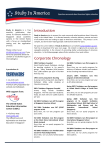
Every year about 4,000 Singaporean students go to the United States to study, the majority of which are undergraduate students looking to earn a Bachelor degree. Of the over 3,000 accredited tertiary institutions in America, Singaporean students are highly concentrated at a handful of schools with the most popular schools often having several hundred Singaporeans. In fact, Singaporean students are the most concentrated of any nation that sends a similar or larger number of students to the United States. Not surprisingly, there is a high degree of correlation between the schools popular with Singaporeans and “highly ranked” schools; the highest ranked schools get the most applicants and several of the larger top schools (Cornell, U. Michigan, etc.) have the most Singaporeans.
Why is this the case?
There are a host of competing university surveys and rankings compiled by a number of publications that seek to rank universities based on a number of quantifiable attributes (acceptance rate, student-faculty ratio, yield rate, endowment per student, etc.). While there is some modicum of utility in these rankings in that they do give a broad indication of which schools are generally better than others, students in Singapore tend to put an undue emphasis in a schools’ ranking rather than more appropriate criteria such as the quality of specific programs, location, general educational philosophy, etc. While the local schools in Singapore are moving towards a “banded” ranking system, the idea of school league tables is one that is very familiar to a student who worked hard to get into the best primary school, secondary school and junior college based on PSLE and O’ Level and results. It is only natural for students and parents to target schools near the top of the page rather than at the bottom.
This tendency is compounded somewhat by the fact that many students study in America on a government or corporate scholarship. These scholarships often have limited lists of schools that are considered “reputable”, often based on outdated rankings. In fact, there are often a similar number of UK and Australian schools on the approved list as American schools. It is good to give students a choice, but with only 40 Australian universities and about 140 in the UK versus over 3,000 in the US, it definitely cuts down on options for those looking to go the States.
What are the implications?
The broad result of this phenomenon is that fewer Singaporeans study in the United States. Top schools receive thousands of applicants from excellent students for a handful of places. A school with 1,500 first year students simply cannot accept 150 students from Singapore, even if they do meet the most stringent of admissions criteria. American universities work very hard to have a diverse student body and it is impossible for them to have a large percentage of students from one geographical location. This also applies to students at the international schools as they are usually put in the same basket of applicants as kids from the local system schools. Simply put, it is much easier to get into a top university if you are a Native American living in Kansas than if you are a Singaporean living in Bedok.
So, many Singaporeans apply to the top schools, a few are accepted and the rest may end up at other overseas destinations or at one of the three public universities here. There are hundreds of American universities that are not necessarily on the US News Top 50 that offer excellent programs and an outstanding learning environment. Furthermore, such schools are eager to get Singaporean applicants to help their diversity numbers (part of some rankings) and it may be easier for students from Singapore to gain admissions. We see several key benefits to looking off the well-beaten path and applying to schools that are not popular with Singaporeans:
As stated above, your chances of getting in are better.
Many of these schools have excellent honors programs; effectively a school within a school for the top students that are often better than more well-known undergraduate programs because of increased access to faculty.
Many top professors at prestigious schools are more keen on penning their next book or conducting cutting-edge research than teaching students. Faculty at other universities are often more accessible.
While need-based financial aid for international students is nearly impossible to obtain, many schools have a sizable amount of merit-based aid that is awarded to the best applications in an effort to entice them to attend. Tuition waivers are a powerful incentive for students who are accepted to several schools when deciding where they will enroll.
Due to demographic factors in the United States, there are more applicants than ten years ago and all schools have been able to become more selective. The overall quality of all schools is increasing; a rising tide lifts all the boats.
Such schools are numerous and some are better than others. In general, the rankings should be used as a starting point and then the numerous college search engines available on the internet should be used to further investigate. The “Ivy League” is an athletic conference of old schools, nothing more. There is a large number of schools eager for Singaporeans that have top programs. Just because the school isn’t a popular destination doesn’t mean it isn’t a quality institution. For instance you may have not heard of Williams College in the United States but back in 1966 a young Singaporean went there for graduate school, his name: Mr. Goh Chok Tong, the current Senior Minister.

